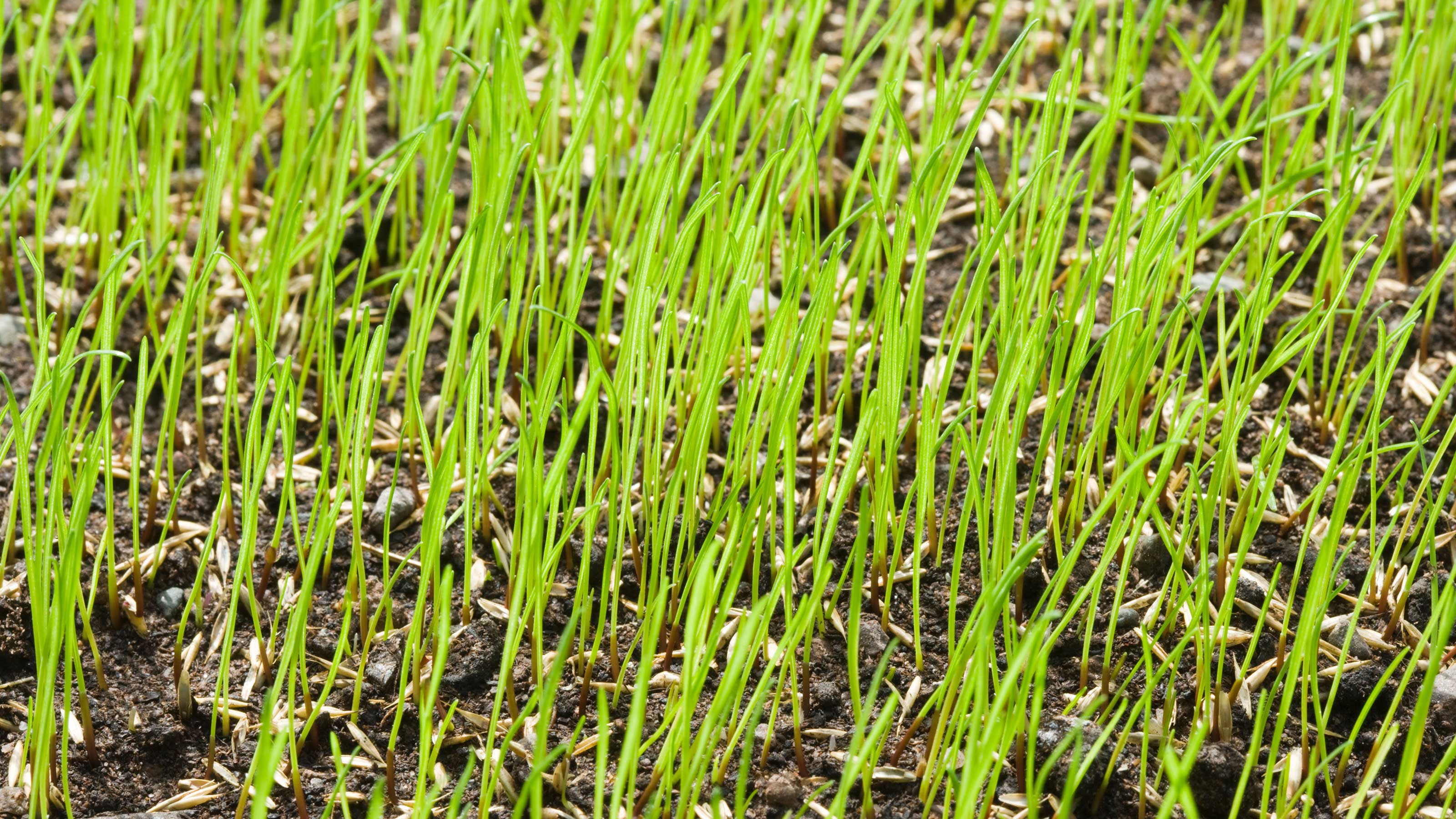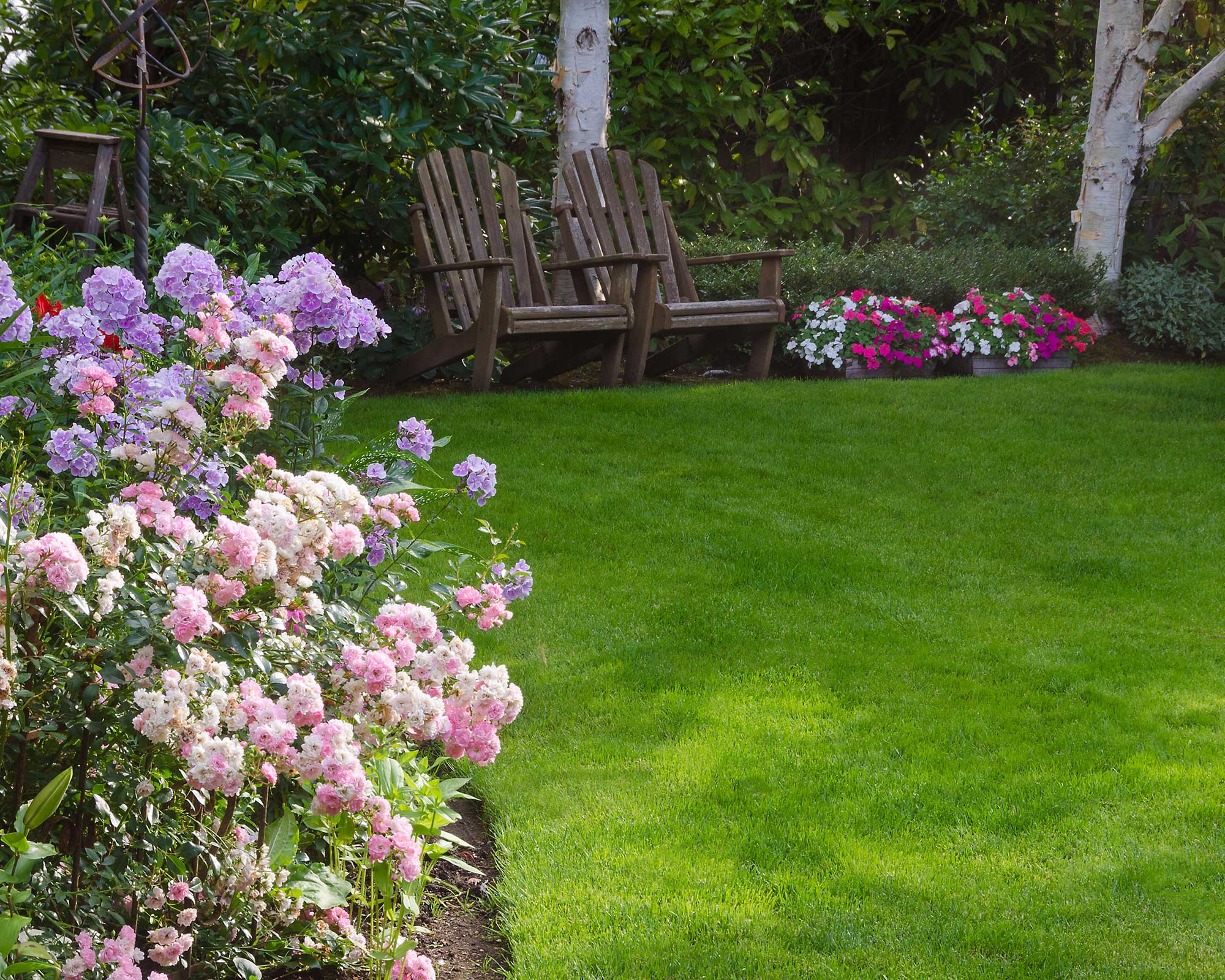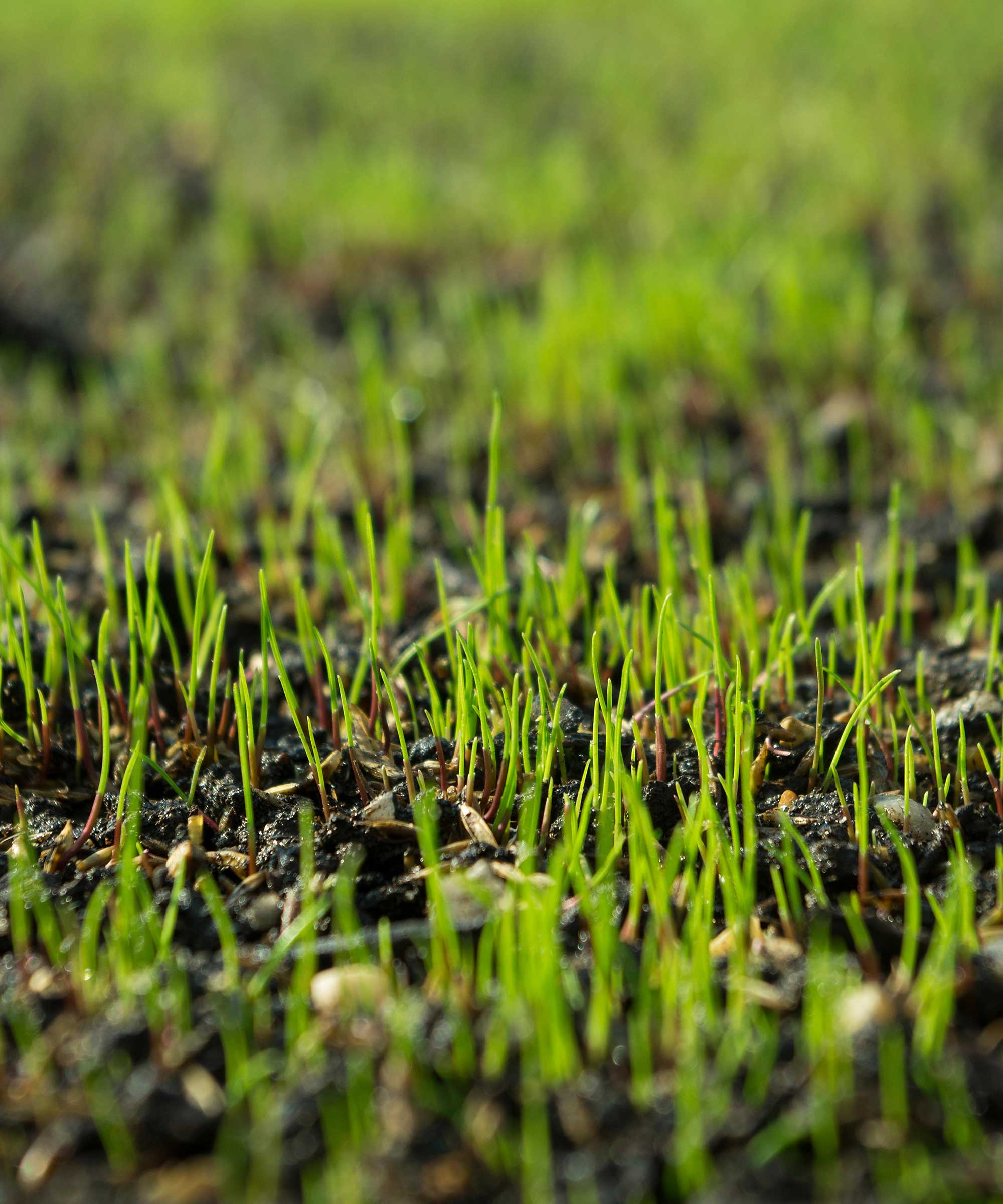How long does it take grass to grow? What to expect when sowing a new lawn
Wondering 'how long does it take grass to grow?' – we've got the answers, plus ways to speed up the process


'How long does it take grass to grow?' – if you're planning on sowing a lawn from seed, you'll probably want to know.
Growing grass in this way is easy and much more budget-friendly than laying turf. Its only drawback is you won't have a new lawn instantly – you have to wait for the seeds to germinate and establish. The good news is, it won't take that long, providing you give it the right care and plant the right types of seeds.
And once you've got your luscious stretch of green established, our lawn care tips will come in handy for keeping it in tip-top condition.
How long does it take grass to grow from seed?
First, you'll need to know how to plant grass seed and follow the necessary steps to sow your lawn. Once this is done, you can expect germination to occur between seven and 10 days, as says the RHS.
This, however, is dependent on the soil being warm, plenty of moisture being provided, and optimal weather conditions. Prepping the ground properly beforehand is important, too.
Sowing your seeds at the right time will also help – which is early autumn or mid-spring. The RHS says autumn sowing is preferred, as your seedlings will establish before the first frosts and their roots will continue to establish well through the winter.
According to The Grass People, with ideal conditions, you will have an established lawn that's ready to use after six to eight weeks. And if you're eager to put your best lawn mower to good use, ensure the grass is at least three inches long beforehand, and only take a third off at a time.

How can you speed up the growth of your lawn?
As mentioned above, providing the optimal conditions and sowing your lawn seed at the right time will help your grass to germinate quickly and successfully. But there are a few other things to bear in mind to support the process.
Firstly, it's important not to disturb the freshly-sown seed. John Negus, a gardening expert from Amateur Gardening, says that once you've sown your grass seed, it 'should be left alone and not walked on for several weeks while it establishes.'
In fact, for the best results, aim to use the lawn as little as possible during the first season, says the RHS. 'If autumn-sown, try to avoid using it earlier than early summer, and if spring-sown, use it as little as possible up to late autumn.'
It's also a good idea to protect the seeds from hungry birds, John says. This can be done by installing netting over the new lawn.
The type of grass seed you use will also affect how quickly it grows. Choose the best variety for your region – some grasses need warmer temperatures to grow, while others thrive in cooler areas.
Watering is also important, particularly in dry spells. But as The Grass People advise, avoid watering your seeds if ground temperatures are lower than 46.4˚F/8˚C or there has been plenty of rain already – this can encourage rotting.
In terms of fertilizing your lawn, it is unnecessary to feed spring-sown grass in the first autumn, according to the RHS. But, do feed autumn-sown lawns the following spring.

What is the quickest grass to grow?
Two types of grass are particularly renowned for their fast-growing nature: perennial ryegrass and Bermuda grass.
Perennial ryegrass germinates quickly (in around 10 days or less) and has a fine texture and a lush green tone. It is well-suited to cooler regions, such as the UK, and often makes up a large proportion of grass seed mixes. From sowing, it will take from five to eight weeks for a lawn to be established.
If you live somewhere warmer, Bermuda grass may be a better choice as it thrives in hotter temperatures, germinating in around the same amount of time. Once sown, expect a thick, dark-green lawn within six to 11 weeks.
Of course, if you don't want to wait for your new lawn, learning how to lay turf is simple too – our guide explains all.


The garden was always a big part of Holly's life growing up, as was the surrounding New Forest where she lived. Her appreciation for the great outdoors has only grown since then. She's been an allotment keeper, a professional gardener, and a botanical illustrator – plants are her passion.
